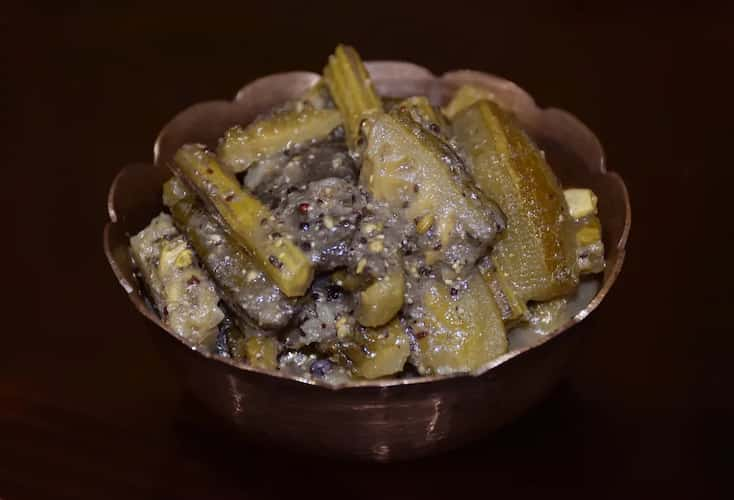Come winter and there’s a festive vibe of sort in the air. This is also the season of marriages and nothing more takes the centre stage more other food. With various functions, traditors and more one cant keep themselves away from roller coaster ride and the food. One such occasion that is much prominent in Bengali marriages is the ritual named -‘Aiburobhat’ (Aiburo (bachelor) Bhat (Rice) ) or Bengali bridal shower. It happens in both the groom and the bride side. It’s literally the bachelor’s party that parents give rather the last meal you have as a bachelor. The ceremony sees all the favourite items of the would be bride and the groom being prepared at their respective homes. Be it the fish kobiraji or the kosha mangsho or the sorshe maach or the kacchgolla the plate is full of all things indulging. Food is the showstopper at an Aiburobhat. Each item is carefully crafted and plated.
So, let’s a look at few of the hot shot dishes that make to the plate
Fish Fry- This crispy starter, sees good quality bhetki deep fried is an all-time favourite. Common amongst the street food vendors, the quality of Fish fry depends on the fillets of bhetki. Marinated in some spicy onion-green coriander paste and then double coated with beaten egg and breadcrumbs to be deep fried until crisp, fish fry is an emotion. It is served with some kasundi and onion-cucumber salad.

Shukto – The star of all vegetarian dishes, Shukto sees a melange of all bitter, sweet veggies. The trick of the dish lies in its tampering with a little Radhuni and dry Red Chili fried in ghee. From Bitter Guard, Papaya, Eggplant, Green Banana, Potato, Sweet potato, Drumsticks, White radish each and every vegetable goes into this wholesome dish. Bodi or lentil dumpling is another important ingredient added to the dish. With the slight dash of milk, the shukto just gets elevated.
Kosha Mangsho- The rich, spicy mutton dish from Bengal that has won many hearts, Kosha Mangsho is synonymous to Bengali cuisine. The flavors from mutton, spices, and mustard oil slow cooked dark-brown gravy surely creates orchestra in your mouth. The tender goat meat is cooked in its own juices with generous helping of onion, ginger-garlic paste and bengali garam masala and minimal water. Paired with some basanti pulao or luchi this dish is a showstopper at Aiburobhat.
Chitol muitha – This not the usual fish curry sees the use of Chital fish (clown knifefish) and Muitha means means fist or muthhi in hindi. For the uninitiated Chital fish is not anywhere close to rohu or other fishes that’s commonly used in Bengali cuisine. This boneless fish preparation is given the shape of balls with the help of hand and then is slightly boiled. Further the fish balls are then fired and cooked in deep rich spicy onion-tomato gravy. This Bengali fish curry that sees its origin in Bangladesh, is surely the outcome of hard work and the result is absolutely delectable.
Basanti Pulao- Basanti means yellow and this sweet pulao which is yellow in colour is loaded with dry fruits and a perfect companion to Kosha mangsho. This fragrant sweet pulao is known to have its roots in Shahjahani Zard Pulao and later the Hindus adapted it. The use of saffron was seen in Murshidabadi cuisine which the Zamindars later included in their own dishes. This rich pulao packed with kaju, kishmish and more completes the plate.

Nolen Gurer Payesh – Payesh takes the centerstage in any Bengali misti platter and when we are talking about winter how can one miss out on some some Nolen gurer payesh. Made by boiling rice and milk together and then topped with date palm jaggery, the flavour and smell of this dessert is beyond words. The fragrant gobindobhog rice is used and there is no denying that cvery Bong has a soft corner for this dish.


